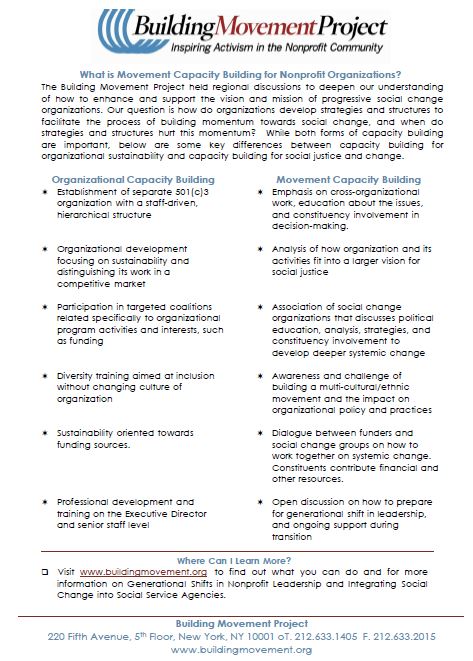
Organizational v. Movement Building Capacity: A Fact Sheet for Differentiating Between the Two
This fact sheet from BMP highlights some key differences between capacity building for organizational sustainability and capacity building for social change. It identifies nine areas identified as important building blocks of social movement capacity for nonprofit organizations.

What Does Social Change Look Like?
This creative exercise uses a series of images as prompts for a conversation about what group members associate with the term “social change”. (Adapted from the Visual Explorer® exercise developed by the Organizational Culture and Practice of the Board: Creating Access and Success for All.)

The 5th Discipline
In 1990, Peter Senge published “The Fifth Discipline” (later followed by “The Fifth Discipline Fieldbook: Strategies and Tools for Building a Learning Organization” in 1994). His books pulled together his extensive research into what different organisations do to build learning capacity – and why some organisations use learning better than others. This link to the Change Forum provides a summary of the book’s content and access to the book.
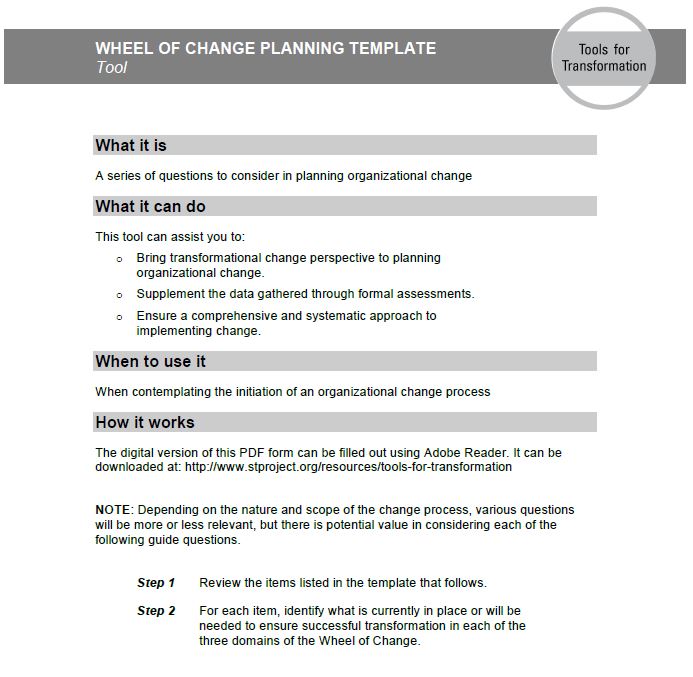
Wheel of Change
Wheel of Change Planning Template is a planning tool to explore what is currently in place or will be needed to embark on a social change effort.
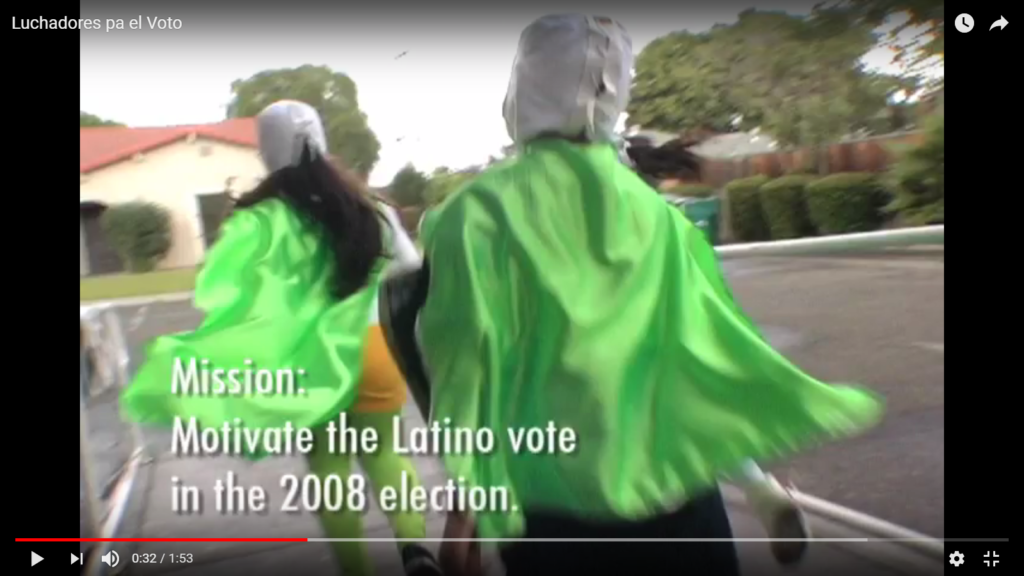
Luchadores para el Voto
This video shows how members of a small community used the strength of its culture to address issues of voter capacity and civic apathy.

Developing a Learning Culture in Nonprofit Organizations
How can today’s nonprofits demonstrate effective use of funds? How can they motivate employees and volunteers and combat burnout and high turnover? How can they ensure that they are performing in accordance with their mission and purpose?
Author Stephen J. Gill answers these questions and more in “Developing a Learning Culture in Nonprofit Organizations”. Filled with practical tips and tools, the book shows students and managers of human services, arts, education, civic, and environmental agencies how to implement a learning culture with individuals, teams, the organization as a whole, and the larger community.
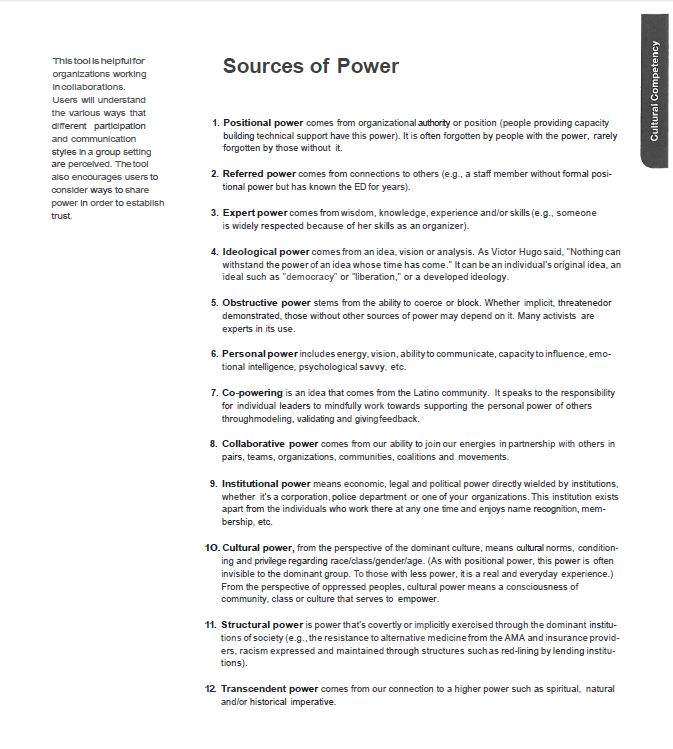
Sources of Power
This handout can be used with organizations working in partnerships. It is helpful to understand the different ways that participation and communication styles can be perceived in groups and encourages users to consider how to share power in order to establish trust.
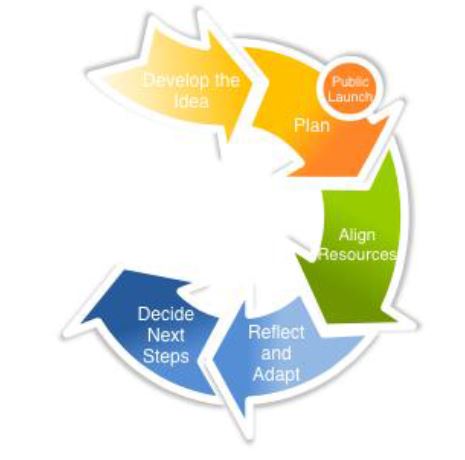
Toolbox for Building Needle-Moving Collaboratives
This concise guide, from United We Serve, provides information, tools, examples and resources for collaboratives to succeed at any stage from planning and development, through roll-out and course-correcting, and on to deciding its next steps.
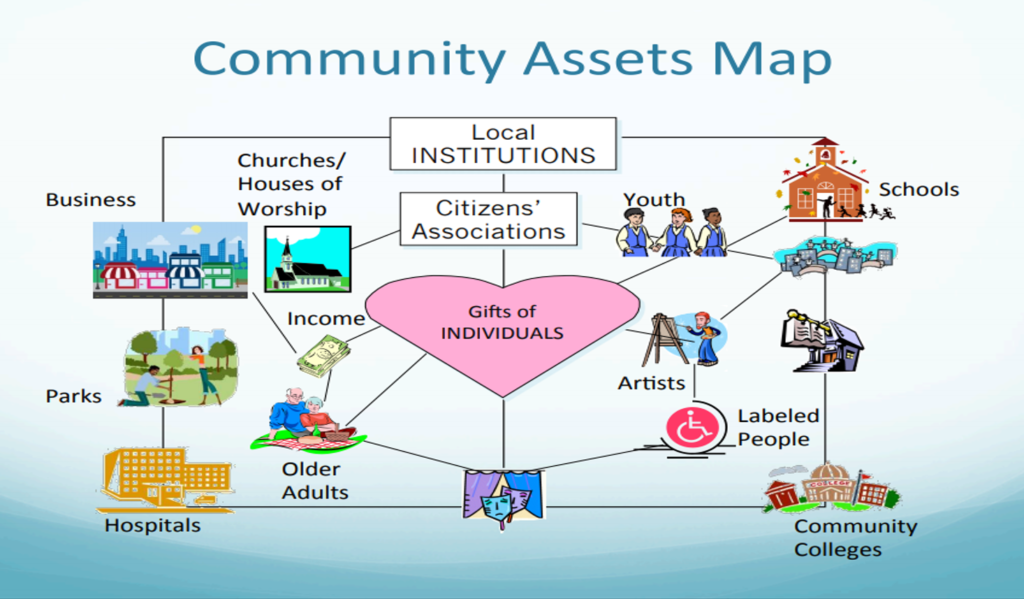
Asset Based Community Development Resources
Asset Based Community Development is a strategy to link individual and community assets to the larger change initiatives so that communities
can drive the development process by identifying and mobilizing existing, but often unrecognized assets, and thereby responding to and creating local economic opportunity. This website/toolkit is a link to Asset Based Community Development resources. It provides talking points, asset mapping tools and facilitation tools. In the context of assessment, the approach uses a capacity inventory rather than a needs assessment to identify assets within the community that may not be obvious or useful to residents.
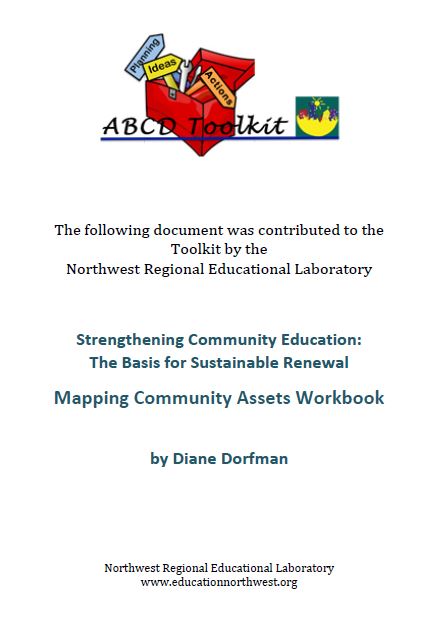
Community Asset Mapping Workbook
This resource, contributed to the ABDC Toolkit by Northwest Regional Educational Laboratory, is an exercise in community development. It begins by asking the reader to perform a self-assessment to determine personal assets. The text then explores ways to map one’s community, to identify the needs, strengths, and powerful and positive people who make up the community. Once the assets are listed, a pool of resources, skills, and knowledge can be defined. Next, the assets of institutions, such as schools and the children they educate, may be listed. By learning how to ask what communities have to offer, a process of building, creating, and developing can be put into motion, and new ideas for community building can be gained.




